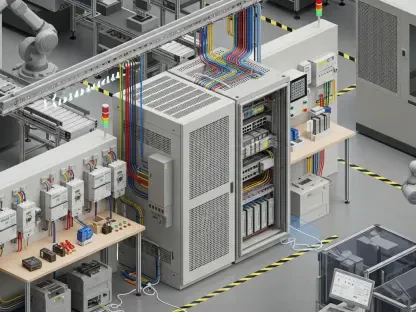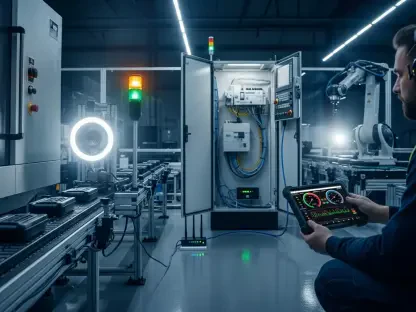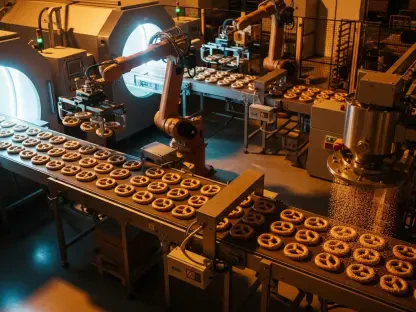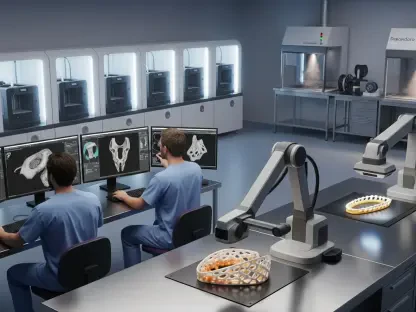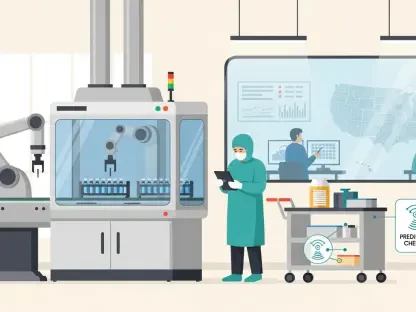The advent of additive manufacturing has revolutionized various industrial sectors, introducing unprecedented possibilities for customization and efficiency in production. Among the latest advancements in this domain is the integration of the Freemelt ONE machine within the Swedish defense manufacturing landscape. This equipment represents a significant evolution in high-precision, metal-based 3D printing, allowing for complex component production with minimal material waste. Now, with an emphasis on enhancing the capabilities of the defense sector, the technology promises to pave the way for more agile and sustainable defense production methodologies.
Unveiling the Freemelt ONE Machine
Breaking New Ground in Additive Manufacturing
The Freemelt ONE is at the forefront of metal additive manufacturing, characterized by its capacity to produce intricate parts with exceptional precision. This equipment introduces an innovative approach to 3D printing, moving beyond conventional practices to facilitate the creation of highly detailed components. It operates with electron beam technology, which offers remarkable control over the manufacturing process, resulting in superior mechanical properties and fine microstructural details in the finished products. The machine’s ability to manage a variety of metal powders expands its relevance across numerous applications within the defense sector.
The unique features of Freemelt ONE are particularly advantageous in the production of parts where traditional manufacturing methods fall short. Components with complex geometries or those requiring critical material specifications can be efficiently fabricated, meeting rigorous defense standards. This not only accelerates the development cycle but also reduces overall production costs. As the defense industry continuously seeks advancements in technology to strengthen national security, the precision and adaptability of the Freemelt ONE machine are invaluable assets.
Advancing Research in Defense Applications
The Swedish defense sector’s integration of Freemelt ONE underscores a strategic commitment to staying ahead of emerging technological trends. The machine serves as a pivotal research tool, enabling researchers and engineers to explore new materials and design methodologies specific to defense applications. The high degree of process control afforded by Freemelt ONE supports the development of specialized alloys and the refinement of microstructures, which are crucial for optimizing the performance of defense components.
This advancement not only enhances the mechanical properties of existing systems but also lays the groundwork for the next generation of defense technologies. By facilitating a deeper understanding of material behaviors and performance under specific conditions, the machine aids in crafting solutions to complex engineering challenges. It ensures that Swedish defense capabilities remain resilient against evolving global threats, significantly contributing to national and international security endeavors.
Implications for Swedish Defense Manufacturing
Strengthening National Security Through Innovation
The integration of additive manufacturing technologies like Freemelt ONE is a strategic move aimed at bolstering Sweden’s national defense capabilities. This decision aligns with a broader trend of leveraging advanced technologies to enhance security measures while optimizing resource utilization. The ability to produce components with high precision and minimal lead times is particularly significant in defense manufacturing, where the need for reliability and efficiency is paramount.
Moreover, the machine’s influence extends beyond production processes, impacting supply chain dynamics as well. By localizing manufacturing capabilities, Sweden diminishes reliance on international suppliers, reinforcing national security by ensuring a steady and uninterrupted supply of critical defense components. This paradigm shift also accommodates rapid prototyping, enabling swift responses to strategic demands, an essential factor in mitigating the risks associated with potential geopolitical instabilities.
Economic and Strategic Benefits
From an economic standpoint, integrating Freemelt ONE within Swedish defense manufacturing is poised to generate substantial benefits. By reducing the time and cost associated with developing and producing sophisticated components, the technology can lead to more efficient resource allocation. These efficiencies are not confined to financial dimensions but also translate into strategic advantages, augmenting the defense sector’s readiness and responsiveness to emerging challenges.
Furthermore, the skills and knowledge acquired through employing such advanced manufacturing technologies are beneficial across other industrial applications. The expertise developed in working with new materials and manufacturing techniques will likely spill over into civilian sectors, fostering innovation and competitiveness in other areas of Swedish industry. This crossover can enhance Sweden’s overall industrial landscape and position the country as a leader in both defense and broader manufacturing sectors on a global scale.
Future Prospects and Industry Trends
The Rise of Additive Manufacturing in Defense
The deployment of the Freemelt ONE machine within the Swedish defense industry is indicative of a broader shift toward adopting additive manufacturing technologies across various sectors. This movement is fueled by the unique advantages these technologies offer, including increased design flexibility, material efficiency, and customization capabilities. In the fast-paced world of defense innovation, these benefits are invaluable, offering the ability to quickly adapt to evolving requirements.
As the defense industry continues to embrace these technologies, there is an expectation for a ripple effect across other related sectors. Many industries are exploring similar paths to enhance their manufacturing capabilities and achieve competitive advantages. Consequently, the widespread adoption of additive manufacturing is expected to catalyze more innovative approaches to traditional engineering challenges, fostering a culture of continuous improvement and technological advancement within the defense sector and beyond.
Sustainable Manufacturing Practices
A significant highlight of the transition to manufacturing techniques like those enabled by Freemelt ONE is the focus on sustainability. Additive manufacturing is inherently more sustainable than traditional manufacturing processes, mainly due to its reduced material waste. The technology optimizes raw material usage, aligning with global efforts toward sustainable production practices and environmentally friendly industrial operations. The environmental impact of defense manufacturing can be significantly mitigated by minimizing waste and energy consumption, aligning with Sweden’s commitment to sustainability.
The adoption of green technologies within the defense sector not only reflects a commitment to environmental stewardship but also supports the global agenda for responsible manufacturing. As the world moves toward a more sustainable future, industries that integrate eco-friendly technologies will likely gain strategic advantages. This awareness of sustainability impacts not only industrial practices but also shapes policy frameworks, influencing future development in technologies and industries related to defense.
Charting a Course for Innovation
The world of additive manufacturing has ushered in a transformative era across various industrial sectors, providing unprecedented opportunities for customization and efficiency in manufacturing processes. A notable advancement in this arena is the adoption of the Freemelt ONE machine within Sweden’s defense manufacturing sector. This cutting-edge equipment epitomizes the next step in high-precision, metal-based 3D printing, facilitating the production of intricate components while significantly minimizing material waste. Such innovations are especially crucial to the defense industry, where the demands for precision and efficiency are paramount. With a strong focus on boosting the sector’s capabilities, the integration of this technology is anticipated to revolutionize defense production methods, making them more agile and eco-friendly. By enabling manufacturers to produce exact replicas with less raw material and energy, this technology aligns well with global trends focusing on sustainability and resource conservation. As countries strive to strengthen their defense through advanced technology, the Freemelt ONE offers a glimpse into a future where manufacturing is both smarter and greener, driving the industry toward more sustainable and responsive practices.


